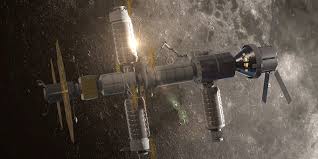Spacecraft design is a complex and challenging field that requires a deep understanding of physics, engineering, and materials science. The design of a spacecraft must take into account a wide range of factors, including its intended mission, the environment it will operate in, and the technological constraints involved.
Key Considerations in Spacecraft Design
- Mission Objectives: The spacecraft’s design must be tailored to its specific mission. For example, a spacecraft designed to study a distant planet will have different requirements than a spacecraft designed for communication or Earth observation.
- Launch Vehicle Compatibility: The spacecraft must be compatible with the launch vehicle that will carry it into orbit. This includes factors such as size, weight, and interface requirements.
- Environmental Factors: Spacecraft must be designed to withstand the harsh conditions of space, including extreme temperatures, radiation, and microgravity.
- Technological Constraints: The design of a spacecraft is often limited by technological constraints, such as the availability of materials, power sources, and propulsion systems.
Key Components of a Spacecraft
- Structure: The main body of the spacecraft, which provides support for other components.
- Propulsion: The system that generates thrust to propel the spacecraft.
- Guidance and Navigation: The system that determines the spacecraft’s position and orientation and guides it to its destination.
- Communication: The system that allows the spacecraft to communicate with Earth or other spacecraft.
- Power: The system that generates electricity to power the spacecraft’s systems.
- Scientific Instruments: The instruments that are used to collect data about the target body or phenomenon.
Challenges of Spacecraft Design
- Weight: Spacecraft must be as lightweight as possible to reduce launch costs and increase payload capacity.
- Reliability: Spacecraft must be highly reliable, as there is often no way to repair them once they are in space.
- Miniaturization: Spacecraft must be as small and compact as possible to fit within the constraints of launch vehicles and to reduce the cost of development and operation.
The Future of Spacecraft Design
As technology continues to advance, we can expect to see even more innovative and capable spacecraft designs. Some of the areas where we may see significant progress include:
- Advanced Materials: The development of new materials that are lighter, stronger, and more resistant to the harsh conditions of space.
- Miniaturization: The development of smaller and more powerful electronics and sensors.
- Autonomous Systems: The development of autonomous spacecraft that can operate independently without human intervention.
Spacecraft design is a complex and challenging field, but it is also a vital one. As we continue to explore the universe, the ability to design and build reliable and capable spacecraft will be essential.
